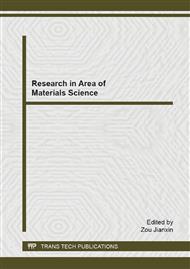p.199
p.204
p.209
p.214
p.219
p.224
p.228
p.232
p.237
Improved Stabilities of Lipase by Immobilization on Eupergit C
Abstract:
Lipase is frequently used for catalyze wide non-natural substrates in order to obtain enantio- and regioselectivie substrates. This study evaluates the stabilities of lipase by immobilization on Eupergit C. The immobilized lipase had improved stability at 60 oC for 60 h compared to the free lipase 1 h at 60 oC. Immobilization resulted in an increase in pH stability over a range of 7.0 - 9.0 and about 54 days for half-life of storage at 4 oC. The tolerance of lipase to organic solvents was also improved by immobilization, and the immobilized lipase showed activating activity when exposed to hydrophobic solvents.
Info:
Periodical:
Pages:
219-223
Citation:
Online since:
April 2015
Authors:
Keywords:
Price:
Сopyright:
© 2015 Trans Tech Publications Ltd. All Rights Reserved
Share:
Citation:


